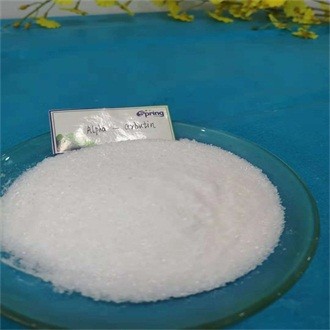Arbutin is a naturally occurring compound found in various plant sources such as bearberry, cranberries, and blueberries. It has gained significant attention in the skincare and cosmetic industry due to its potential skin whitening and lightening properties. The mechanism behind the whitening effects of arbutin revolves around its ability to inhibit the activity of an enzyme called tyrosinase, which plays a crucial role in the production of melanin – the pigment responsible for skin, hair, and eye color.
The skin's color is determined by the amount and distribution of melanin produced by melanocytes, specialized cells in the epidermal layer. Tyrosinase is a key enzyme in the melanin synthesis pathway, catalyzing the conversion of the amino acid tyrosine into melanin precursors, which eventually leads to the formation of melanin pigments. Arbutin exerts its whitening effect primarily through competitive inhibition of tyrosinase activity.
Arbutin contains a glycoside bond, which is a chemical linkage between a glucose molecule and a hydroquinone molecule. Hydroquinone is a well-known compound with skin-lightening properties, but it can be harsh on the skin and is associated with potential side effects. Arbutin, on the other hand, acts as a gentler alternative to hydroquinone while still providing effective melanin production inhibition.
When arbutin is applied to the skin, it is absorbed and metabolized into hydroquinone through enzymatic processes. This hydroquinone then competitively inhibits the action of tyrosinase by occupying its active site. As a result, tyrosine molecules cannot be effectively converted into melanin precursors, leading to a decreased production of melanin. This ultimately results in a gradual reduction in skin pigmentation, leading to a lighter and more even skin tone.
It's important to note that arbutin's whitening effects are not immediate. Skin turnover takes about a month, so consistent and prolonged use of arbutin-containing products is necessary to observe noticeable changes in skin pigmentation. Additionally, arbutin's mechanism of action is more effective for addressing issues related to hyperpigmentation, such as age spots, sun spots, and melasma, rather than altering the inherent skin color.
Arbutin's safety profile is generally better tolerated than some other skin-lightening agents, making it a popular choice for individuals looking to address uneven skin tone. However, individual reactions can vary, and it's advisable to perform a patch test before incorporating new skincare products into your routine.
In conclusion, the skin-whitening mechanism of arbutin relies on its ability to inhibit tyrosinase activity, leading to decreased melanin production. Its competitive inhibition of tyrosinase, resulting in reduced melanin synthesis, makes it an appealing ingredient in skincare products targeting hyperpigmentation and uneven skin tone. As with any skincare ingredient, it's recommended to consult with a dermatologist before introducing new products to your routine, especially if you have specific skin concerns or conditions.
Post time: Aug-30-2023


